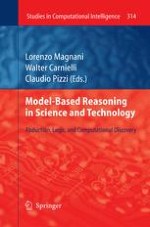2010 | Book
Model-Based Reasoning in Science and Technology
Abduction, Logic, and Computational Discovery
Editors: Lorenzo Magnani, Walter Carnielli, Claudio Pizzi
Publisher: Springer Berlin Heidelberg
Book Series : Studies in Computational Intelligence
